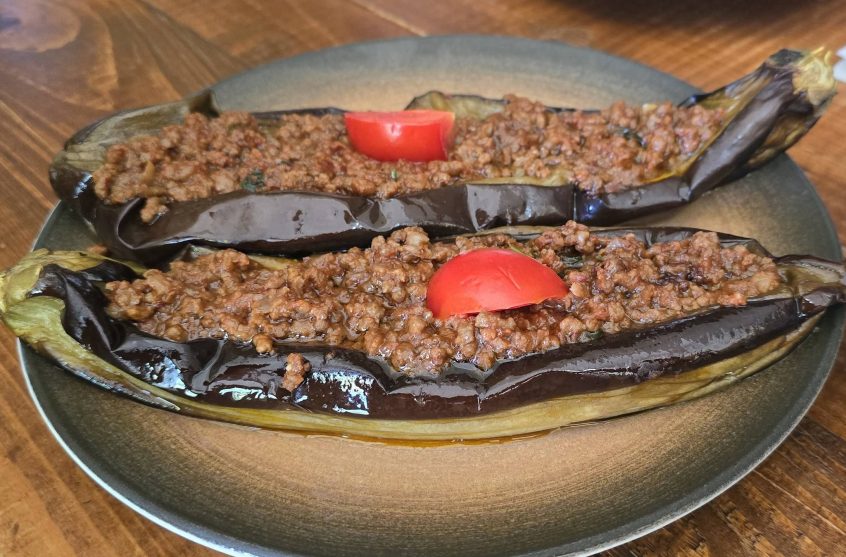If you aren’t hungry now, be prepared—this post will definitely whet your appetite.
At 5 am I was woken by the call from the muezzin at a local mosque. A muezzin is a person appointed at a mosque to recite the call to prayer, which is announced five times a day. It is the signal for the faithful to stop whatever they are doing and perform their prayers. The muezzin’s voice resonates from the mosque’s minarets, it is loud and impossible to miss (even from a dead sleep). I heard it, then promptly rolled over and went back to sleep. About thirty minutes later the shrieks of seagulls ensured I wouldn’t be sleeping in.
That was okay. I’d gotten enough rest and needed to get to the other side of town by 9:30 to start a full-day food tour.
Culinary Backstreets offers food tours and cooking classes around the globe. The one I signed up for, “Born on the Bosphorus: Exploring Three Distinct Waterside Neighborhoods,” was described as “From a workingman’s breakfast in a frenetic seaside market to a leisurely fish lunch in a waterside Bosphorus neighborhood, this full-day Istanbul food tour explores the diverse cultural and culinary range of Istanbul’s amazing waterside neighborhoods.” That description doesn’t do it justice.
Our guide, Gonca, was fun, clearly loved food and food history, and went above and beyond to make sure we all (there were seven of us) had a fabulous time. She was the best guide I have had in a very long time. I’d follow her anywhere on any tour.
Gonca told personal stories about her family’s and friends’ traditions, explained the paths of food preparation around the globe, incorporated history into food stories.
For example, I now know the history of baklava. I always thought it originated in Greece. Not true. Baklava, the rich, sweet pastry made of layers of filo filled with chopped nuts and sweetened with syrup or honey, has a history that spans centuries and cultures. Gonca traced its origins to ancient civilizations in Syria. As trade and conquests spread culinary practices across regions, baklava made its way to the Byzantine Empire and the Arab world. The recipe evolved, incorporating local ingredients and preferences.
Baklava’s most significant transformation happened at the royal palace of the Ottoman Empire (in the fifteenth century). It was in the kitchens of the Topkapi Palace in Istanbul that baklava was perfected, paper thin layers of filo dough, pistachios, and sugar syrup. But it was intended for the royals only. Regular citizens were not permitted to buy pistachios. So, they made a version with walnuts, referred to now as “grandmother’s baklava.”
The Greeks also couldn’t get pistachios or sugar, so they substituted honey and walnuts or hazelnuts. We heard these kinds of stories about all sorts of foods, while we were sampling them. It made both history and the foods themselves, fascinating.
Our first tastings were in the Beşiktaş neighborhood. There are streets that specialize in distinct types of food—bars and nightlife, bakeries, and so on. We started on a block known for serving breakfast all day long. There we had a feast–Turkish style scrambled eggs, simit–a circular bread, encrusted with sesame seeds, white bread, cheese, sausage, and my personal favorite, bal kaymak, clotted water buffalo cream blanketed in honey and eaten with a chocolate bread. If I had access to bal kaymak on a regular basis I’d have to buy a whole new wardrobe.
We stopped at little hole-in-the-wall places, visited bakeries, markets and more. I won’t go through every stop, there were eight of them, but will say that as the day went on everyone had to force themselves to eat. After seven hours we’d tried typical Turkish dishes for every meal, had meat, fish, vegetables, pickles, and more desserts than I care to think about. Each stop was unique and the food at each went beyond delicious.
I don’t often make recommendations, but based on my experience today I will seek out Culinary Backstreets wherever I travel. You might want to look into them as well.

